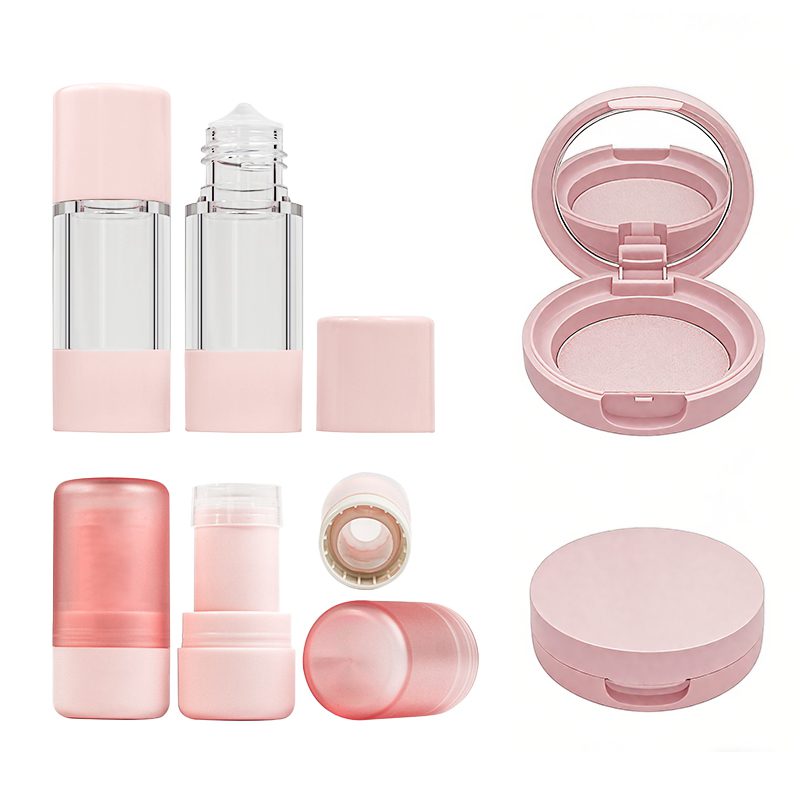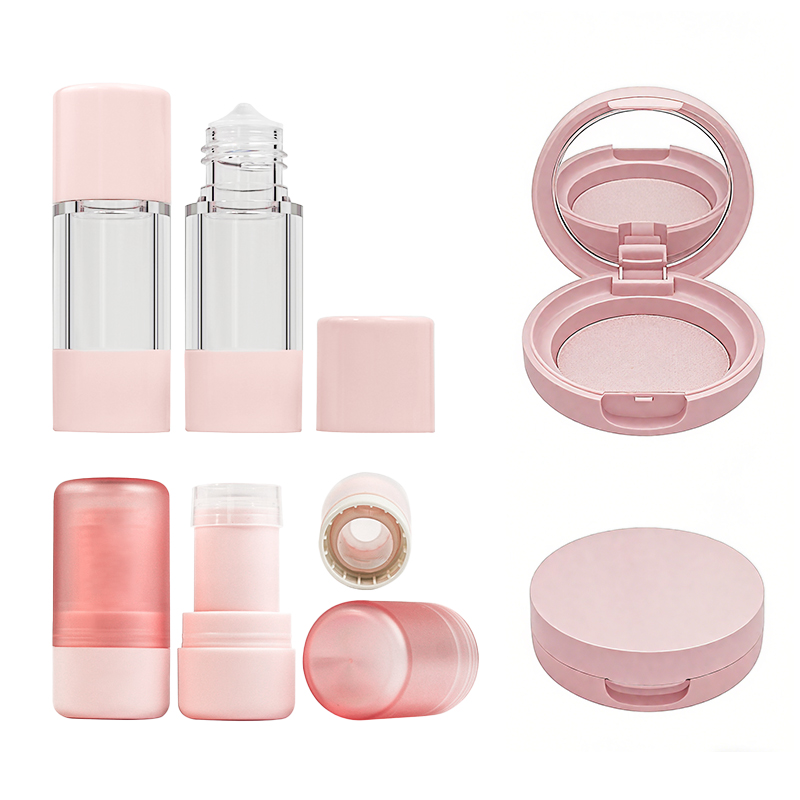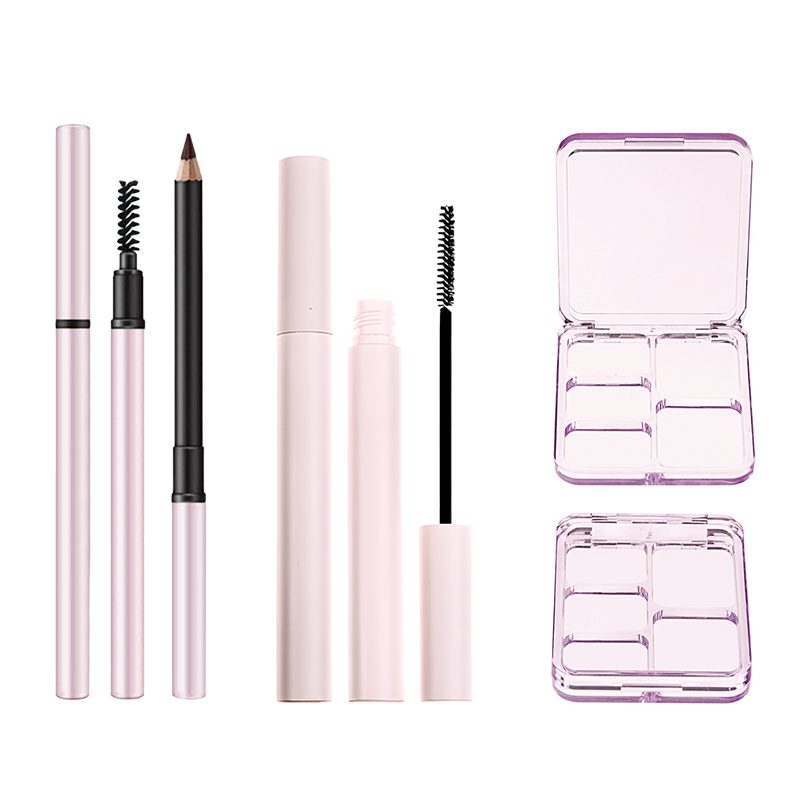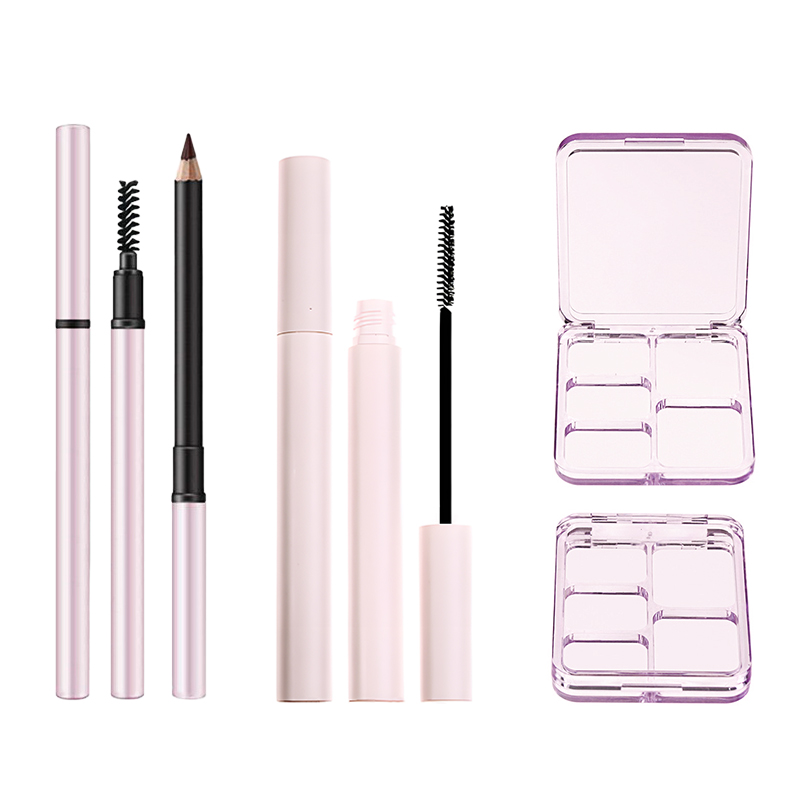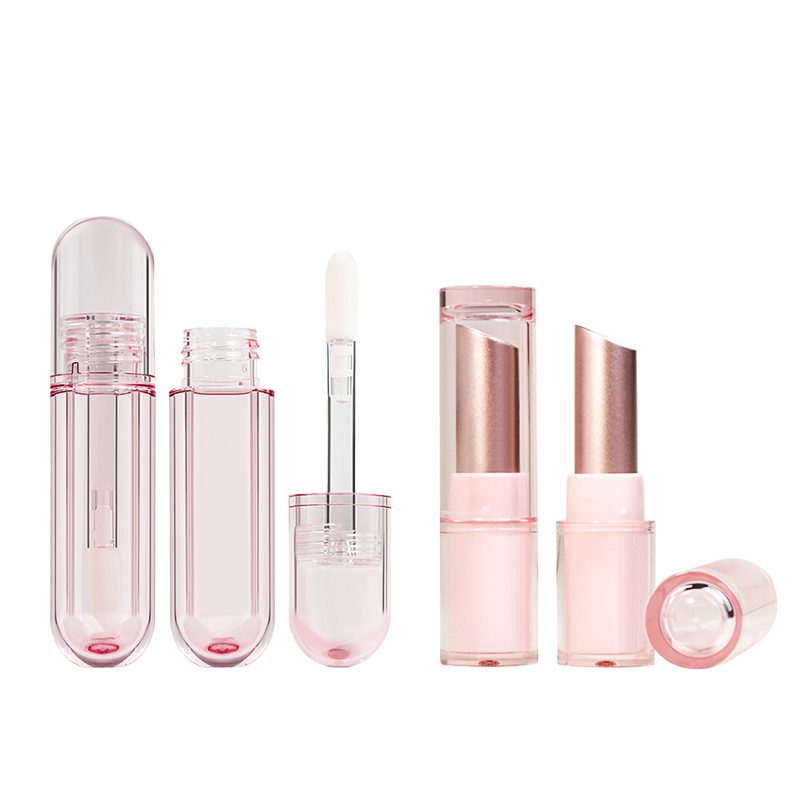Teal Mascara Tube: Effective Ways to Reduce Waste
It’s wild how many beauty products we toss without a second thought—especially something as tiny (yet mighty) as a teal mascara tube. But that cheerful pop of color? It hides a big fat waste problem. Billions of tubes hit the trash every year, most made from plastic that’ll outlive us all—and our grandkids too.
Here’s the kicker: brands aren’t stuck choosing between cute packaging and eco-smarts anymore. Refillable systems, PCR plastics, even glass options are stepping up to give both sustainability and style their moment in the sun. Turns out, you can have your glam and keep it green.
Mascara might be small… but its impact? Huge. This guide breaks down smart ways to cut waste without losing your edge—or your customers’ love.
Key Points for a Cleaner Planet, One Teal Mascara Tube at a Time
➔ Refillable Packaging Options: Embrace refillables with airless pumps to reduce waste and keep formulas fresh longer.
➔ Sustainable Materials Matter: Opt for recyclable plastic, biodegradable materials, or PCR plastic to shrink environmental impact.
➔ Decoration with Purpose: Use silk screen printing and hot stamping on upcycled tubes to combine style and eco-conscious branding.
➔ Closure & Component Variety: Choose screw caps, brush applicators, or tamper-evident seals for both function and safety.
➔ Custom Color & Volume Flexibility: Offer mascara in volumes from 5ml to 30ml with Pantone-matched teal hues that reflect your brand identity.
➔ Clean & Reuse Steps: Sanitize thoroughly—remove applicators, rinse tubes, disinfect pumps, and air-dry components before refilling.
➔ Boost Image Through Upcycling: Share upcycled packaging stories on social media to captivate green-minded audiences and elevate brand loyalty.
Feeling Guilty About Makeup Waste? Teal Mascara Tube Hacks Save Planet
Small swaps can make a big difference. These smart packaging choices help you keep your lashes bold without trashing the planet.
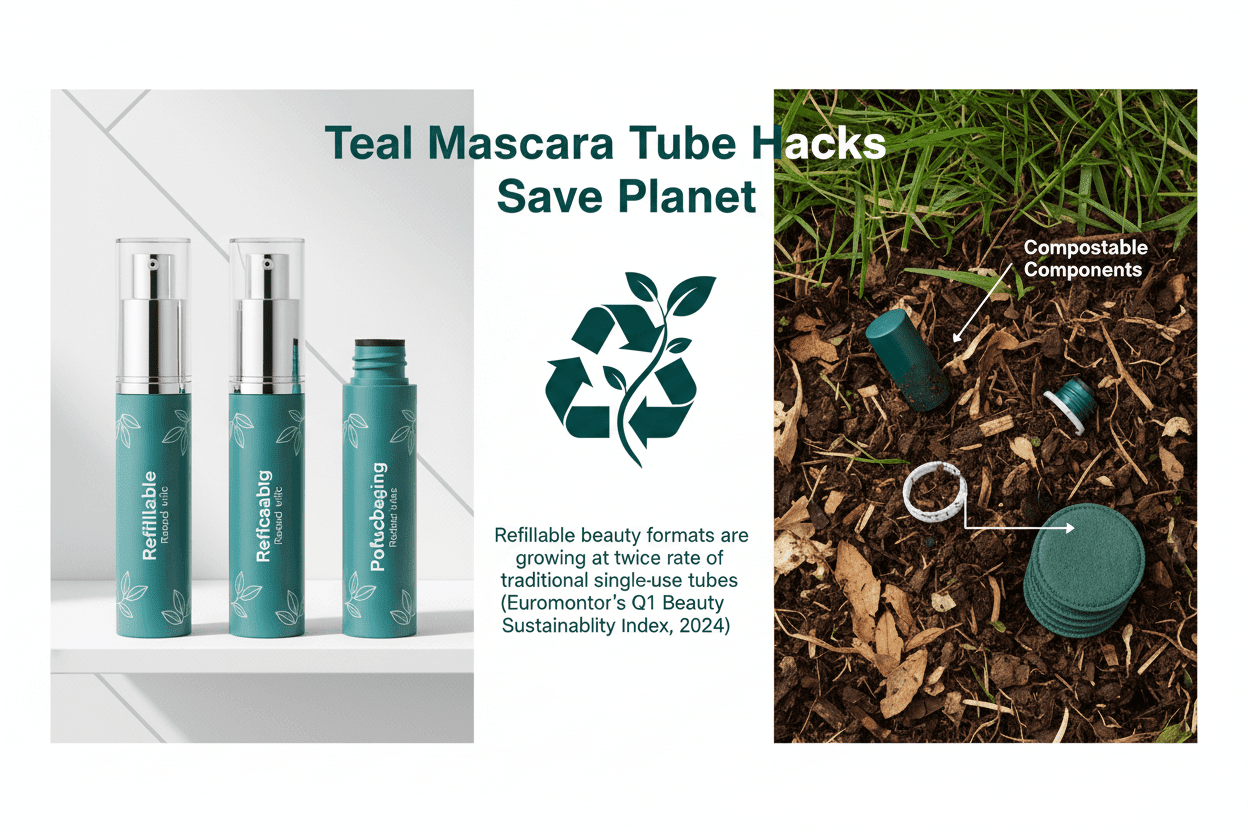
Refillable Packaging Options with Airless Pumps
- Refillable packaging isn’t just about reuse—it’s about smarter storage too. Airless pumps protect your mascara from bacteria and drying out.
- Brands are shifting toward eco-friendly systems that reduce product waste and extend shelf life.
- Three popular formats:
- Twist-lock cartridges with internal seals
- Snap-in capsules for easy home refills
- Magnetic pump closures that click into place
💡 According to Euromonitor’s Q1 Beauty Sustainability Index (2024), refillable beauty formats are growing at twice the rate of traditional single-use tubes.
The subtle shift away from full-size disposable tubes means your teal-colored wand doesn’t have to clog up landfills anymore. Just swap the core, snap it in, and go.
Silk-Screened Refillable Tubes with Reduced Plastic Content
🟢 Durable + Decorative + Sustainable = The new trifecta for mascara lovers.
Silk-screening allows brands to print directly on refillable tubes, eliminating the need for extra plastic labels or shrink sleeves. That cuts down on unnecessary material use while keeping the tube stylish.
Grouped benefits:
- Reduced plastic casing by up to 60%
- No peeling labels = longer-lasting branding
- Compatible with most standard brush inserts
- Easy recycling due to mono-material design
Topfeel’s latest line uses this exact tech—blending sleek design with real environmental impact. You still get that signature teal outer shell, but now it’s lighter on both your purse and the planet.
Compostable Components for Guilt-Free Mascara
Some parts don’t need to last forever—and that’s a good thing.
🌱 Compost-ready components like bio-resin wipers and sugarcane-based caps break down naturally after disposal. These biodegradable elements are changing how we think about beauty waste.
Quick facts:
- Bio-based caps decompose within six months in industrial compost settings.
- PLA-derived inner sleeves maintain mascara integrity but vanish after use.
- Bamboo-fiber spoolies offer an alternative to petroleum-based brushes.
A report by Mintel (April 2024) found that over half of Gen Z consumers would pay more for cosmetics made with compostable components, especially if they feel less guilty tossing them out later.
With these innovations, even your boldest lash days can come without regret—or landfill guilt.
What Are Teal Mascara Tube Variations?
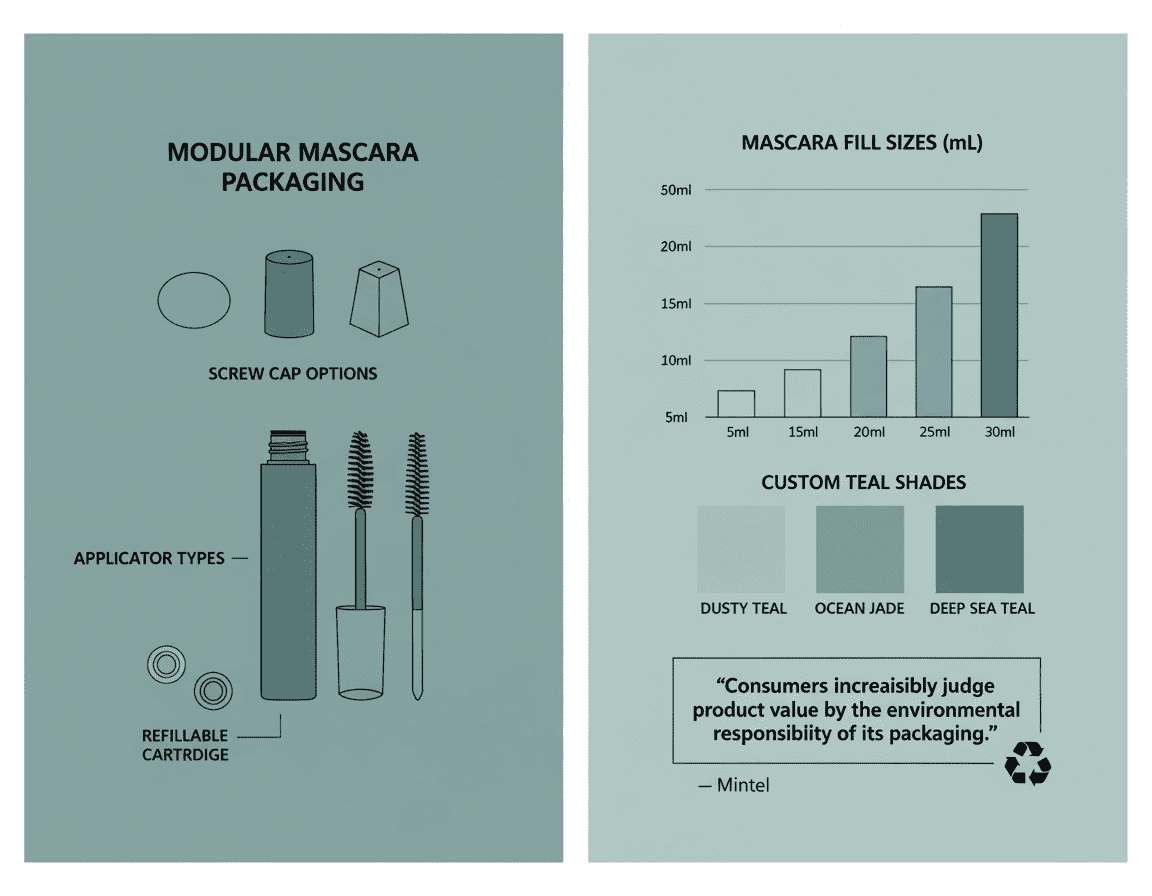
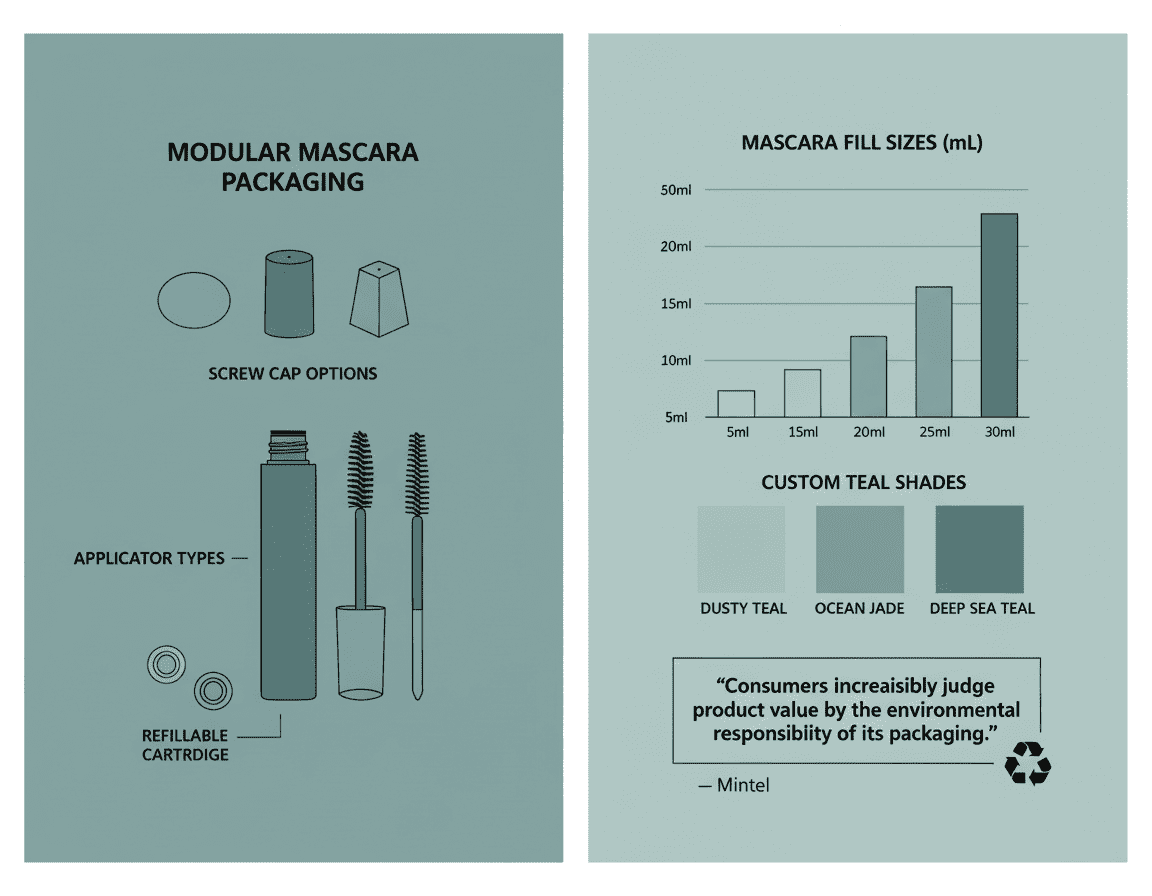
From size to material, mascara packaging has way more personality than you’d expect—especially when it comes to teal-inspired designs.
Plastic Tubes, Glass Bottles & Aluminum Containers
- Plastic tubes are lightweight and flexible, perfect for everyday use and easy squeezing.
- Glass bottles bring that luxe vibe, often chosen for premium or limited-edition collections.
- Aluminum containers offer durability with a sleek metallic finish that screams modern edge.
Whether you’re going for a minimalist look or high-end glam, these mascara packaging types let brands play with texture and weight while keeping things practical.
Recyclable Plastic, Biodegradable Material & Virgin Polypropylene
Sustainability is no longer optional—it’s expected.
• Brands are turning to recyclable plastic, reducing landfill waste without compromising quality.
• Some go even greener with biodegradable material, which naturally breaks down over time without leaving harmful residue.
• Meanwhile, others opt for virgin polypropylene, prized for its strength and clarity despite not being recycled.
According to Mintel’s Beauty Packaging Outlook Q2 2024, “Consumers increasingly judge product value by the environmental responsibility of its packaging.” That makes every choice—from tube walls to caps—a statement of values.
Silk Screen Printing, Hot Stamping & Shrink Sleeves
Want your tube to pop? Decoration matters.
🖌️ Silk screen printing delivers crisp logos and bold colors directly on curved surfaces—great for branding consistency.
🔥 Hot stamping adds metallic flair or glossy contrast that instantly grabs attention on shelves.
📦 And then there’s the versatile shrink sleeves, offering full-wrap graphics that can turn any container into a mini billboard.
Together, these techniques help transform even the most basic teal-tone base into something eye-catching and totally brand-worthy.
Screw Caps, Brush Applicators & Tamper-Evident Seals
Each part of a mascara unit plays its own important role:
- Closure Type:
- Screw caps ensure airtight storage while making reuse simple.
- Tamper-proof options build trust with consumers who value safety.
- Applicator Style:
- Classic wands remain popular thanks to their familiarity.
- Innovative brush shapes cater to niche lash effects like curling or volumizing.
- Seal Integrity:
- Adding a tamper-evident seal protects formula integrity during transit and display.
These small decisions shape how users interact with every swipe—and whether they come back for more.
From 5ml to 30ml: Custom Color Matching Options
Here’s how brands mix volume variety with visual identity:
Step One: Choose your fill size—common choices range from compact 5ml units ideal for travel kits up to generous 30ml tubes meant for long-term use.
Step Two: Match your brand palette using custom shades inspired by trends like dusty teal or ocean jade; color-matching tech ensures accuracy down to the last hue shift.
Step Three: Pair color with finish—matte? Glossy? Frosted? Each changes how light bounces off your tube and affects shelf appeal dramatically.
Topfeel offers full customization across sizes and finishes so every teal-hinted design feels unmistakably yours—even before customers twist open the cap.
Four Steps To Clean Your Teal Mascara Tube
No one wants gunky leftovers messing with their lash game. Here’s how to clean that old tube right and keep things fresh.
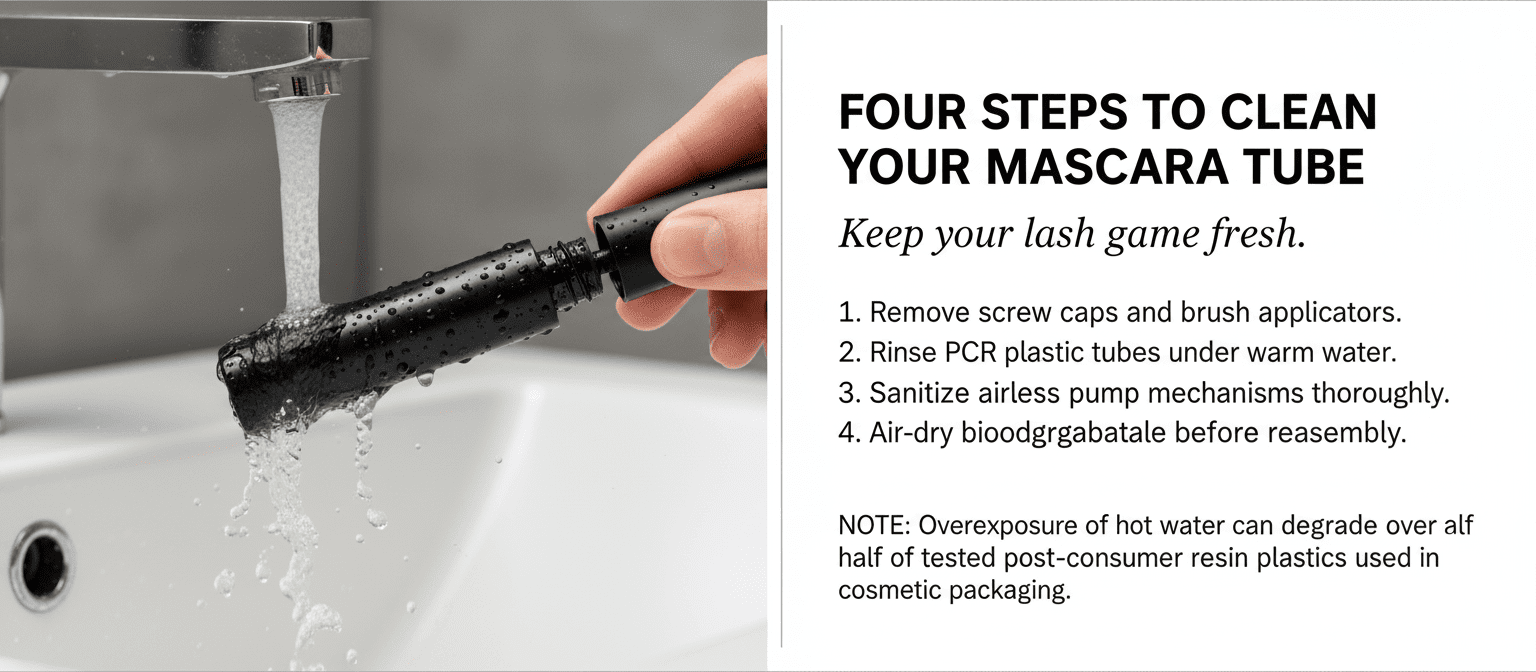
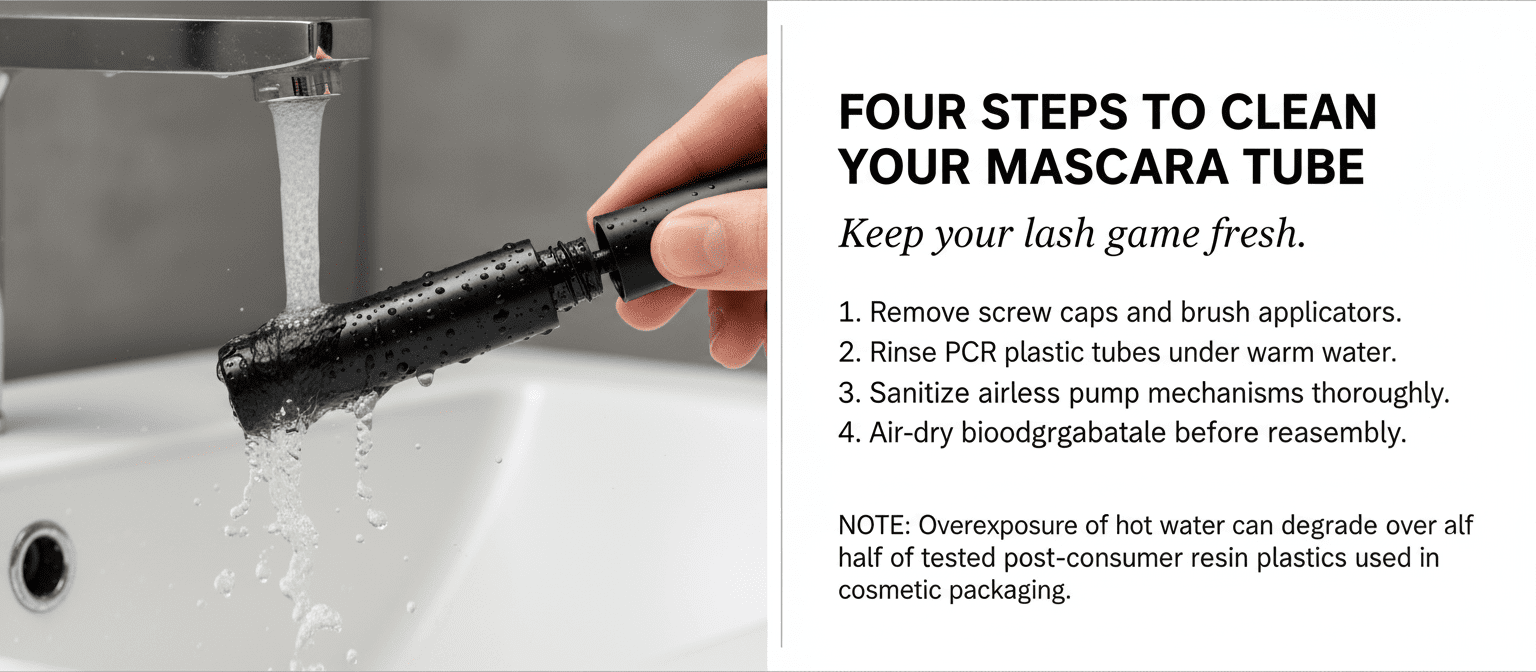
Step 1 Remove Screw Caps and Brush Applicators
Taking apart the tube is the first move. You’ve got to break it down before you build it back up.
- Gently twist off the screw caps—don’t yank or you’ll strip the threading.
- Pull out the brush applicators slowly; wiggle if there’s resistance from dried product.
- Place each removed part on a clean towel so nothing rolls off your counter.
- Use tweezers if your fingers can’t grip smaller internal pieces.
- A cotton swab helps remove any built-up mascara crust around tight crevices.
Once everything’s separated, you’re all set for a proper scrub-down.
Step 2 Rinse PCR Plastic Tubes Under Warm Water
This part’s all about gentleness—no harsh scrubbing or boiling water here. Just enough heat to loosen residue without warping the material.
- Run warm—not hot—water through the open end of the tube.
- Rotate and tilt so water flushes every corner inside.
- Use a soft brush or pipe cleaner to dislodge stubborn bits stuck on inner walls.
According to a May 2024 report by EcoPack Insights, “Overexposure to hot water can degrade over half of tested post-consumer resin plastics used in cosmetic packaging.” That makes this step crucial for preserving your tube’s shape and strength. So rinse smart!
Step 3 Sanitize Airless Pump Mechanisms Thoroughly
You’re not just cleaning for looks—you’re protecting your eyes from bacteria too. This step takes finesse because these parts are delicate but essential.
Start by soaking all removable airless pump mechanisms in isopropyl alcohol for at least five minutes. Shake gently in a sealed jar if needed—this helps loosen grime without damaging tiny valves inside. Then:
• Rinse under cool filtered water
• Let sit on an absorbent cloth while upright
• Dab dry with lint-free tissue where moisture lingers
These components control mascara flow during application, so keeping them hygienic ensures smoother use and fewer clogs later on.
Step 4 Air-Dry Biodegradable Components Before Reassembly
Moisture trapped inside biodegradable packaging? That’s a mold party waiting to happen. Drying properly isn’t optional—it protects both material and function.
Lay out every washed piece on a mesh rack or paper towel-lined tray. Let air circulate freely around each part, especially those made from bamboo or cornstarch blends—the kind often found in eco-friendly packaging options like some versions of your favorite teal-colored tubes.
Flip each piece after an hour so no damp spots linger underneath. Once fully dry, check integrity: no warping, no softening, no lingering smell? Time to pop everything back together and call it good!
Plastic Vs Glass Teal Tubes
Plastic and glass both bring something different to the table when it comes to teal mascara packaging—let’s break it down.
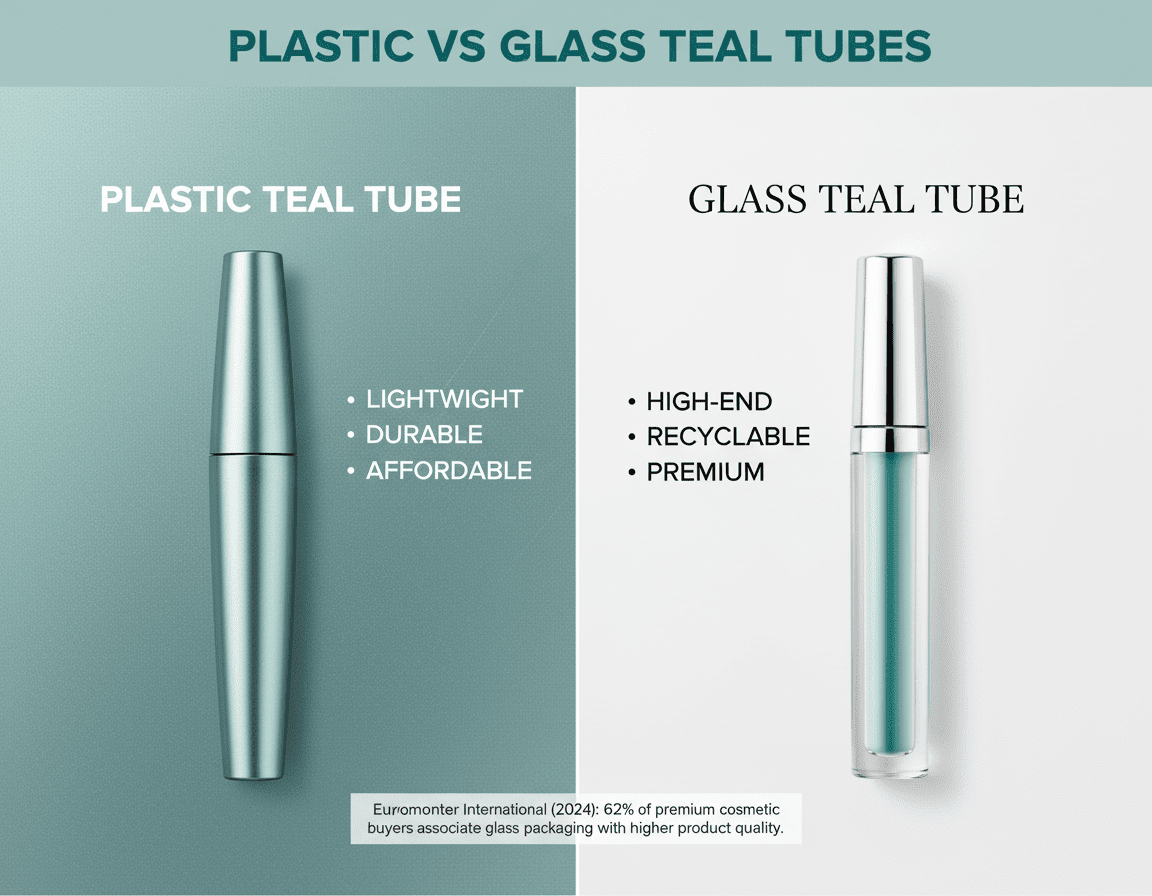
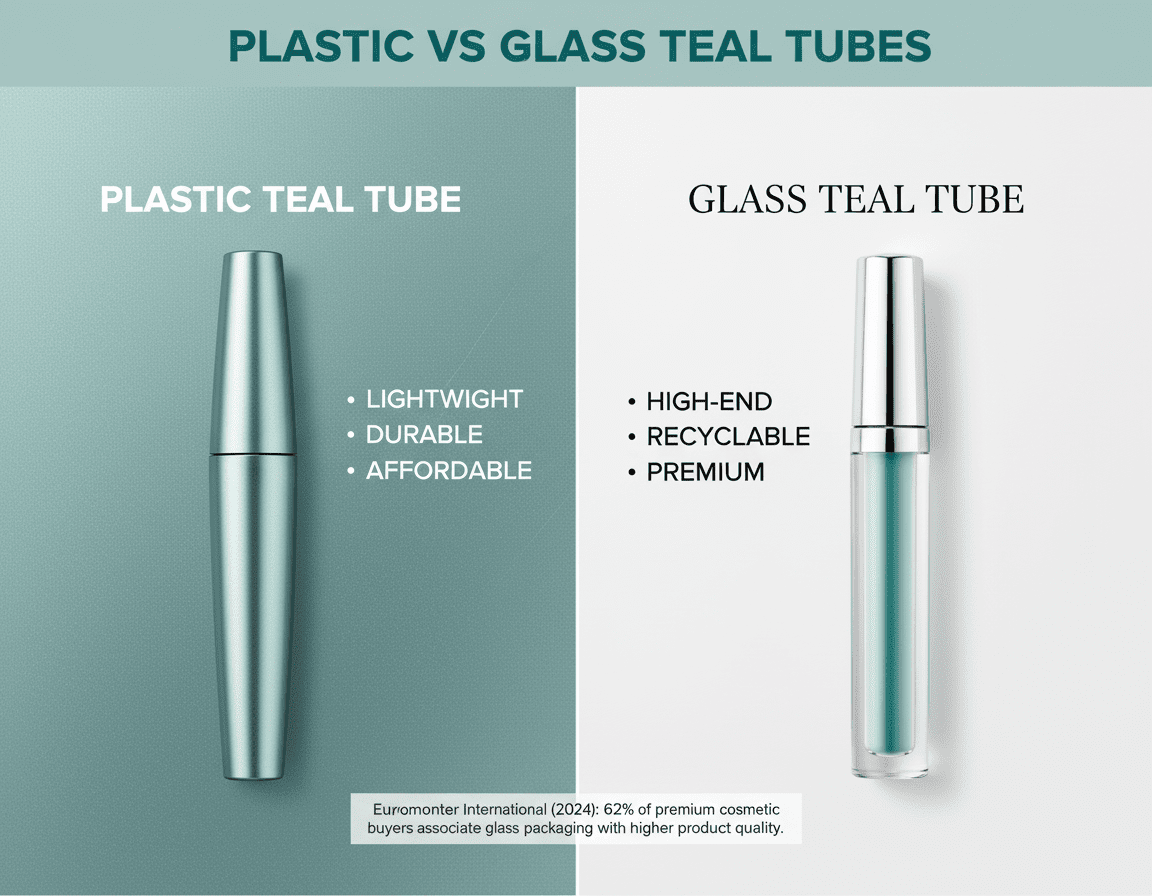
Plastic Teal Tubes
- Lightweight and easy to toss in a purse without worrying about breakage.
- Often made from durable polymers that can survive drops, dents, and travel chaos.
- Lower production cost makes them ideal for bulk manufacturing.
- They’re less prone to shattering than their glass counterparts.
- Lighter materials mean lower shipping emissions—a sneaky win for sustainability efforts.
✦ Great for brands targeting younger consumers or those who value affordability over luxury.
Plastic tubes don’t always get the credit they deserve—they’re tough, cheap, and surprisingly adaptable for creative designs using a variety of teal finishes.
Quick thought bubbles:
• Want flashy? Try metallic teal coatings on plastic.
• Need eco vibes? Opt for PCR-based plastics.
• On a budget? Plastic is your best bet.
From a production standpoint, plastic wins on speed and flexibility:
- Mold-ready in minutes
- Compatible with most brushes
- Easier color matching with vibrant teal pigments
When choosing between function and flair, plastic offers both—without maxing out your margins.
Glass Teal Tubes
While more fragile than plastic, glass tubes scream sophistication—and yes, they’re fully recyclable, which matters more than ever now.
1) They elevate any mascara line instantly with that luxe weight-in-hand feel.
2) They resist chemical leaching better than many plastics—great news for sensitive formulas.
3) Brands looking to stand out on crowded shelves often turn to glass because of its clarity and shine.
☑️ But be warned: they can crack under pressure (literally), especially during transit or rough handling by end users.
In a recent report by Euromonitor International (2024), over 62% of premium cosmetic buyers said they associate glass packaging with higher product quality—even when the formula inside is identical to that in a plastic tube.
Multiple perks bundled up:
• Strong visual impact thanks to smooth transparency
• Higher perceived value among customers
• Fully recyclable without loss of purity
That said, not every brand can afford the extra shipping precautions or the higher unit cost associated with glass. But if you’re aiming high-end? It might just be worth it—even if your teal mascara tube ends up being heavier in both weight and price tag.
Can Upcycling Boost Brand Image?
When brands get creative with sustainability, customers notice. Let’s explore how upcycled packaging can spark loyalty and boost visibility.
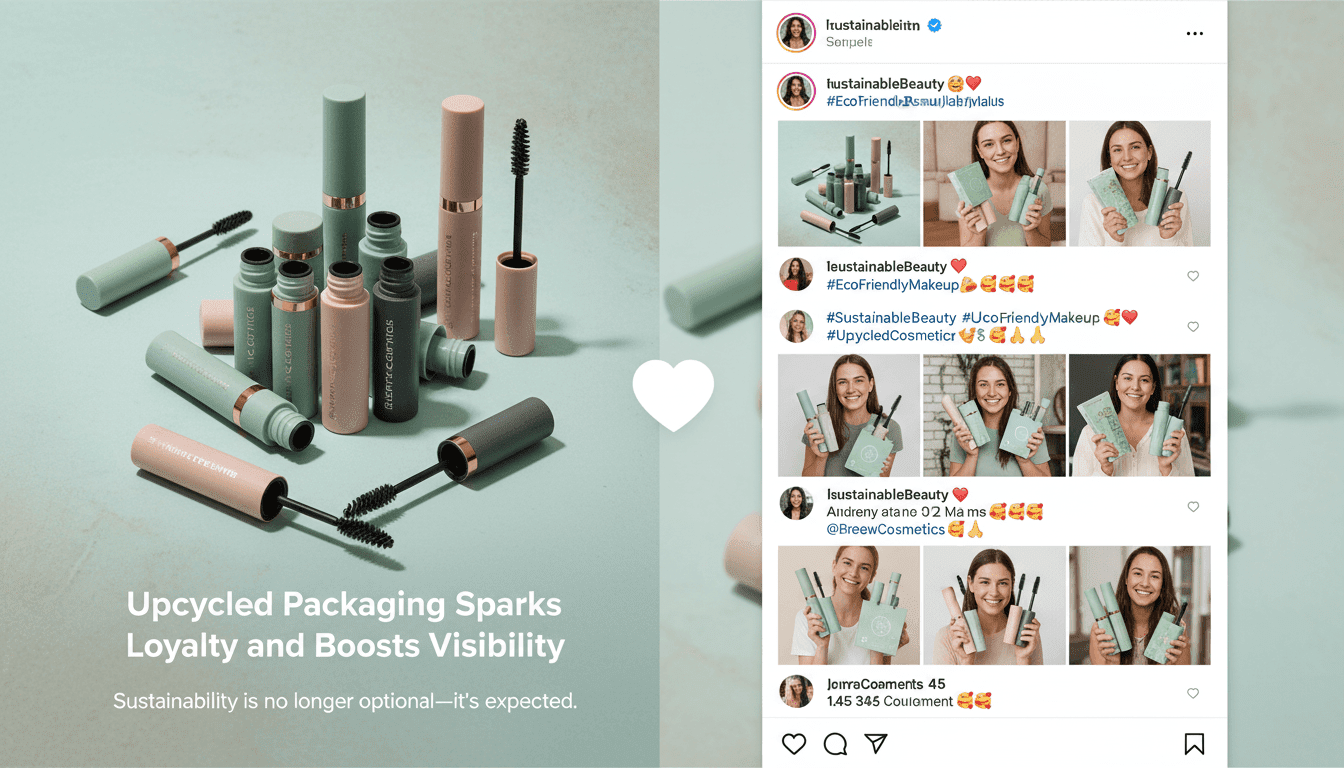
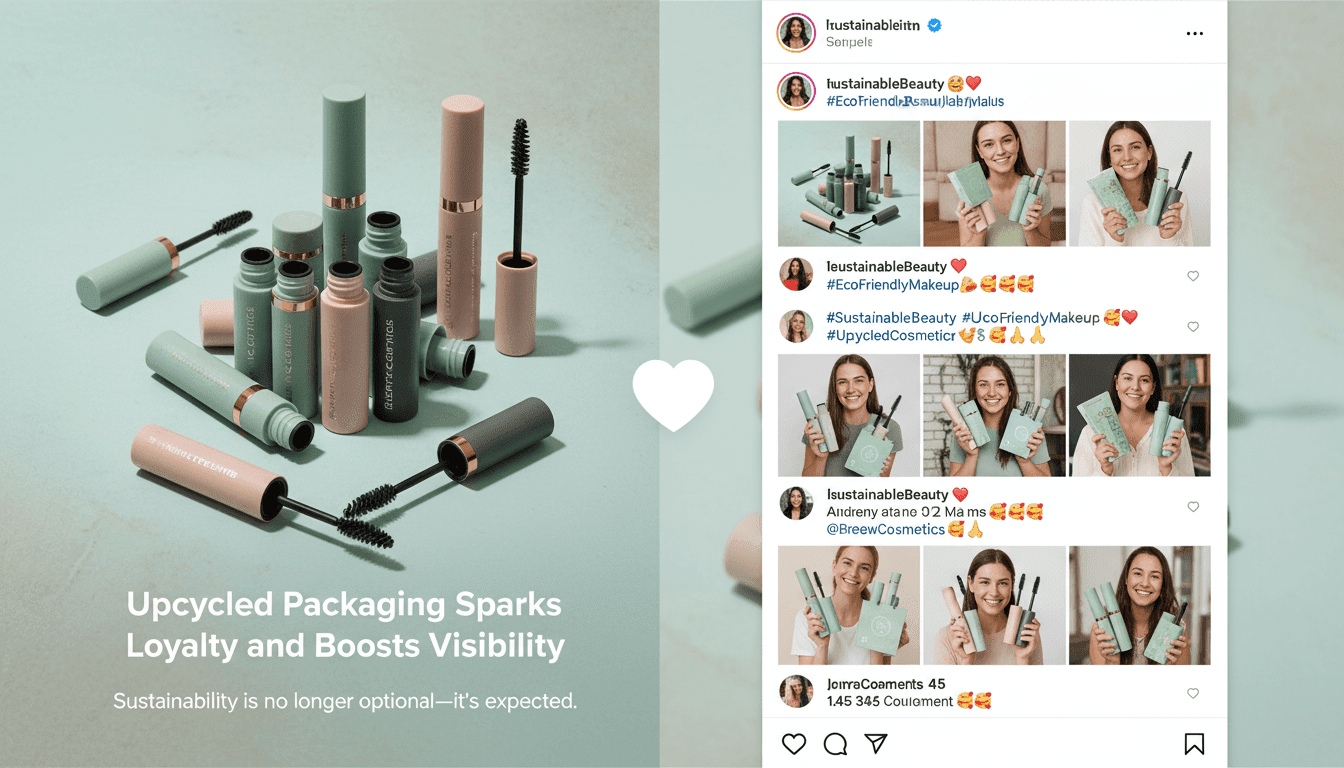
Upcycled Mascara Tubes: A Social Media Win
- Upcycled mascara tubes are more than just eco-friendly—they’re shareable.
- Users love snapping pics of their chic, sustainable beauty hauls.
- Brands that go green often see boosts in social media mentions and tags.
Beauty influencers crave fresh visuals. When they spot a sleek, tinted container made from reused materials—maybe even a muted teal mascara tube—they post it. That’s free exposure. Add smart hashtags and you’ve got yourself an online campaign that practically runs itself. According to Mintel’s April 2024 report on Gen Z purchase behavior, “sustainability is no longer optional—it’s expected.” So when your feed fills with real users flaunting your packaging? That’s gold for brand engagement.
Highlight Refillable Packaging Options for Customer Loyalty
→ Step One: Introduce the concept clearly on product pages
→ Step Two: Offer incentives like discounts or exclusive shades
→ Step Three: Make refills easy to access—subscriptions help here
Customers stick around when they feel involved. Offering refillable packaging shows commitment to long-term value and waste reduction. Combine this with a punchy rewards system and you’ve got a loyalty loop that keeps them coming back. Eco-conscious shoppers especially appreciate brands aligning with their lifestyle—and they’ll tell others about it too.
Feature Label Application of Brand Logos on Recycled PCR Plastic
Short-run cosmetics often miss the chance to shine because branding gets overlooked on sustainable materials. But applying high-quality labels directly onto recycled PCR plastic adds polish without sacrificing eco points.
• Choose matte or gloss finishes for contrast
• Use biodegradable adhesives for full-circle sustainability
• Apply bold, legible brand logos that pop against muted tones
This technique works wonders across mascara lines—even those housed in soft-colored tubes like dusty blue or light teal variants. It’s not just about looks; it signals quality and environmental awareness all at once.
Offer Silk Screen Printing Personalization on Upcycled Containers
Personal touches matter more than ever now—and silk screen printing brings serious flair to upcycled designs.
• Bold typography stands out against textured surfaces
• Custom colors let fans match their vibe or season
• Limited-edition runs build hype fast
Want something unique? Try pairing earthy greens with metallic inks for contrast, especially on upcycled containers shaped like traditional mascara tubes, but made modern through form and finish. Adding names or initials creates emotional ties—and higher perceived value. With silk screen methods using eco-friendly inks, the result is both stylish and responsible—a rare combo people love showing off online and IRL alike.
Office Setting: Implement Waste Audits
Sustainability gets real at the office when you track what’s tossed. This one’s all about keeping tabs on beauty packaging waste where it happens most—your desk.
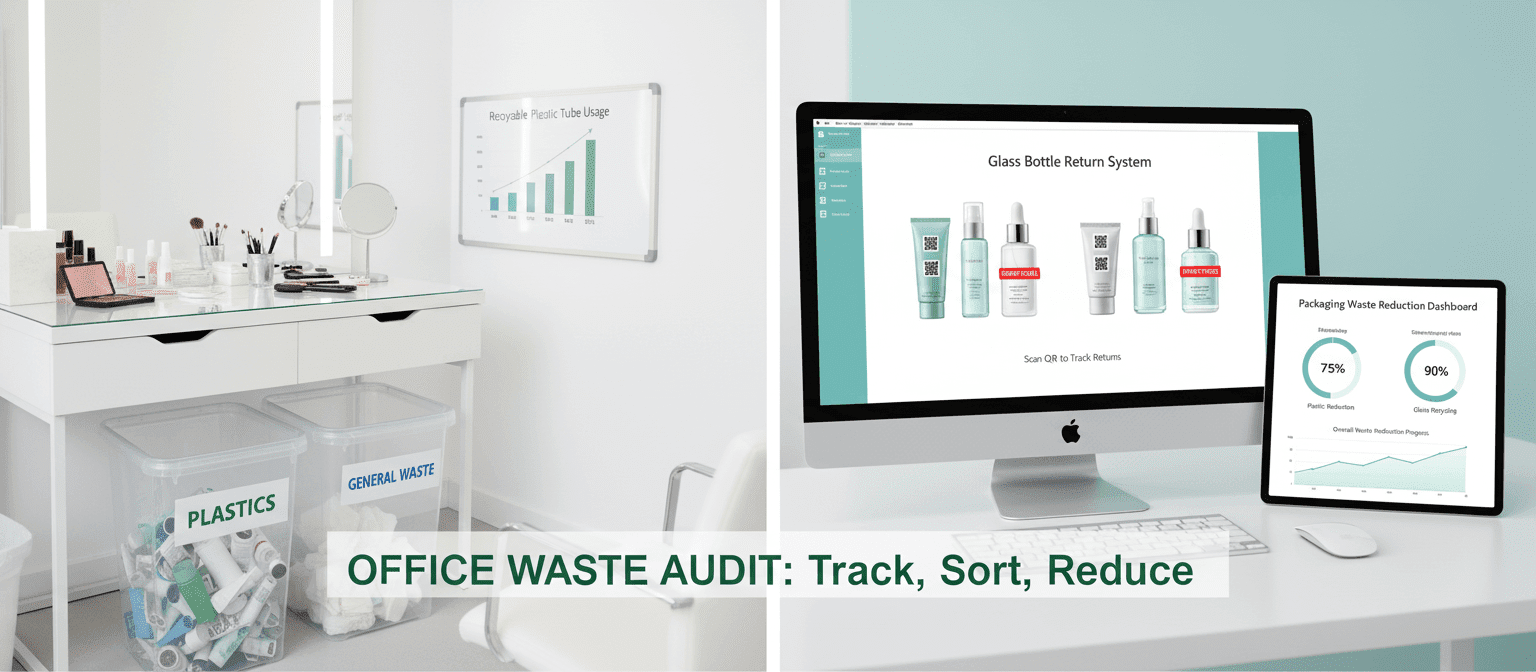

Audit Recyclable Plastic Tubes at Office Makeup Stations
• Start by checking how many recyclable plastic tubes are being used weekly—especially those sneaky ones hiding in drawers.
• Place visible sorting bins near office makeup stations with clear labels to guide disposal.
• Encourage staff to log discarded items monthly, helping build a picture of plastic waste reduction progress.
You’d be surprised how many empty tubes pile up unnoticed. A quick audit can reveal patterns—like which products get replaced fastest—and help fine-tune your recycling program before things spiral into landfill territory.
And if someone’s still tossing their old teal-colored lash wand in the trash? Time for a gentle nudge toward the bin marked “plastics.”
Track Glass Bottle Returns with Tamper-Evident Seals
- Install a simple return tracking system using barcodes or QR codes tied to each bottle.
- Attach tamper-evident seals that show if an item has been opened or reused improperly.
- Log returns digitally and reward departments with high return rates—it turns sustainability into a bit of friendly competition.
When folks know their returned bottles are being tracked, they’re less likely to toss them mindlessly. Plus, sealed containers give peace of mind that your efforts toward waste reduction aren’t getting undermined along the way.
Glass doesn’t lie—it either comes back or it doesn’t.
Set Targets for Reduced Plastic Content in Packaging
♦ Break goals down by category—set different benchmarks for skincare, haircare, and cosmetics based on current packaging types.
♦ Swap out heavy plastics for compostables or refill-friendly formats wherever possible; think beyond just bottles and include caps, pumps, and seals too.
♦ Review progress quarterly using visual dashboards so teams can actually see their impact on reducing packaging materials waste.
Short-term wins matter here—like replacing thick mascara tubes with thinner designs or switching to aluminum lids instead of layered plastic closures.
Rethinking that familiar teal lash tube? Maybe next time it’s made from sugarcane bio-resin instead of petroleum-based polymers—that’s the kind of quiet revolution that starts at your desk drawer and ends up reshaping an entire supply chain around more eco-friendly packaging choices.
FAQs
Sustainability isn’t just a buzzword—it’s what your customers expect. The smartest choices in eco-friendly packaging combine beauty with conscience:
- Refillable tubes that invite users back again and again
- Compostable materials that quietly return to nature after use
- Lightweight designs using PCR plastics, reducing virgin material without sacrificing style
Each option tells a story: one of responsibility, care, and modern elegance.
Absolutely. You’re not limited to off-the-shelf shades—your brand deserves more precision than that. From soft seafoam to deep oceanic teal, custom Pantone matching ensures perfect alignment with your vision. Sizes range from 5ml minis for travel kits up to 30ml statement pieces for full-size collections.
Refillables aren’t just about waste reduction—they tap into something deeper: trust.
- Customers feel seen when brands offer long-term solutions instead of throwaways
- A sturdy container becomes familiar—a daily ritual rather than disposable plastic
- Refills are often priced lower too, giving buyers another reason to come back
It’s not only practical; it feels personal.
Yes—and they don’t compromise looks or recyclability. Silk screen printing works beautifully on recycled PCR plastics, offering clean lines and vivid colors while keeping everything curbside-recyclable. Labels can also be applied if you need flexibility across product lines—but keep them minimal so the sustainability message stays clear.
The right closure does more than seal—it reassures.Screw caps paired with brush applicators strike a balance between function and familiarity. Add tamper-evident seals during production runs if you’re shipping direct-to-consumer or stocking retail shelves—because nothing says “we’ve got this” like knowing no one else has touched it before you do.


